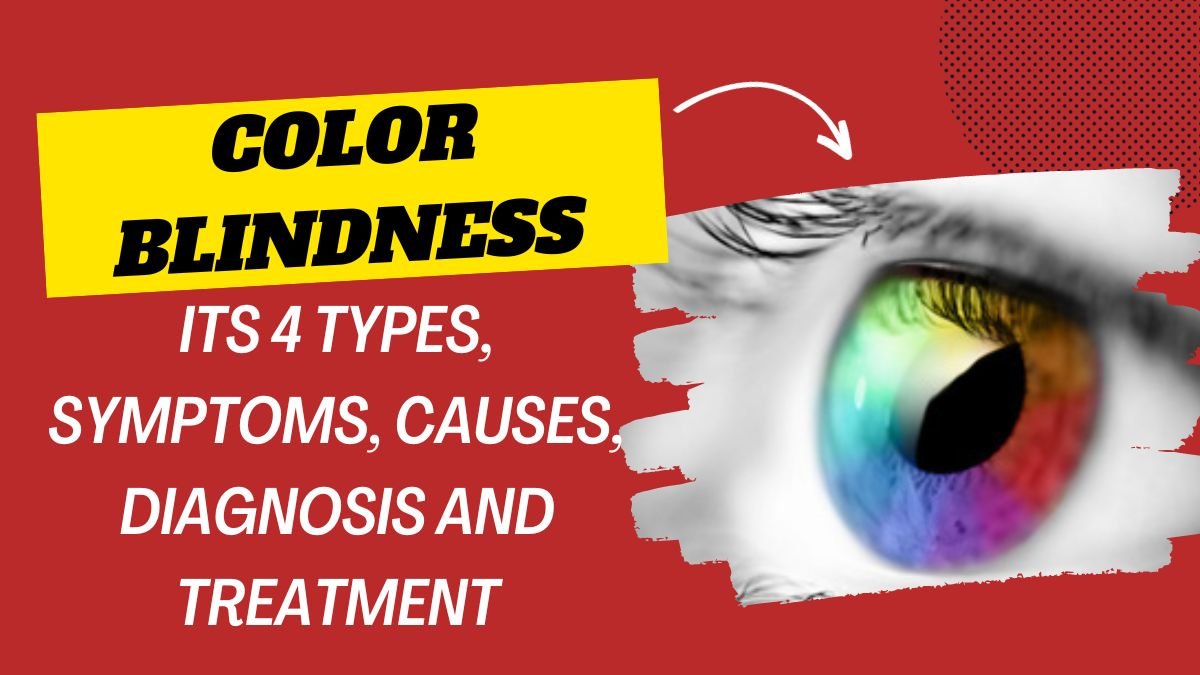Color blindness, a condition that affects the perception of color, is more common than one might think. It’s essential to grasp the various aspects of this condition, including its types, symptoms, causes, diagnosis, and available treatments. This article will provide you with a comprehensive understanding of color blindness and how it impacts individuals’ lives.
Types of Color Blindness
Color blindness can be categorized into several types, each affecting color perception differently. The most common types are:
Deuteranomaly
Deuteranomaly is the most prevalent form of color blindness, affecting the perception of the green-red spectrum. Individuals with this condition have difficulty distinguishing between green and red hues.
Protanomaly
Protanomaly, on the other hand, impairs the perception of red shades. People with protanomaly may struggle to differentiate between different shades of red.
Tritanomaly
Tritanomaly, a less common type, influences the perception of blue and yellow colors. People with tritanomaly may confuse these colors.
Total Color Blindness
In rare cases, some individuals experience total color blindness, where they see the world in shades of gray. This condition is known as achromatopsia.
Symptoms of Color Blindness
Recognizing color blindness often involves observing specific symptoms, which include:
Difficulty Distinguishing Colors
One of the primary symptoms of color blindness is difficulty distinguishing certain colors. For example, red-green color blindness makes it hard to tell red and green apart.
Color Confusion
People with color blindness may confuse colors that others perceive as distinct. This can lead to mistakes in tasks that rely on color recognition.
Reduced Color Perception
Color blindness can lead to a reduced perception of colors, making the world appear dull or washed out to those affected.
Causes of Color Blindness
Color blindness can be attributed to various causes, including:
Genetic Factors
The most common cause of color blindness is genetic inheritance. It can be passed down from one generation to the next, predominantly affecting males.
Acquired Causes
In some cases, color blindness can be acquired due to health conditions, medications, or chemical exposure.
Diagnosis of Color Blindness
Diagnosing color blindness involves specialized tests, such as:
Ishihara Color Test
This test employs a series of plates with colored dots, and individuals with color blindness will struggle to identify numbers or shapes within the dots.
Farnsworth-Munsell 100-Hue Test
In this test, participants arrange colored tiles in a specific order, and the results help diagnose the type and severity of color blindness.
Treatment for Color Blindness
While there is no cure for color blindness, several strategies can help individuals manage their condition:
Color-Correcting Glasses
Special glasses with colored lenses can help individuals with color blindness perceive a broader spectrum of colors more accurately.
Vision Therapy
Vision therapy involves exercises and training to enhance color discrimination skills.
Gene Therapy
Research is ongoing into gene therapy to correct the genetic mutations responsible for some forms of color blindness.
Coping with Color Blindness
Coping with color blindness involves adaptation and support. It’s crucial for individuals with color blindness to learn ways to overcome their challenges and educate others about their condition.
The Impact of Color Blindness on Daily Life
Color blindness can affect daily life in various ways, from difficulties in choosing clothing to challenges in specific professions that require accurate color recognition.
Creating an Inclusive Environment
It’s essential for society to create an inclusive environment for people with color blindness. This includes making public spaces, digital content, and educational materials accessible to them.
Living with Color Blindness
Living with color blindness requires patience and a positive outlook. With the right support and resources, individuals with color blindness can lead fulfilling lives.
Conclusion
In conclusion, color blindness is a condition that affects millions of people worldwide. It comes in various forms, each with its unique challenges. Understanding color blindness is the first step in creating a more inclusive and empathetic world. By promoting awareness and providing support, we can make life easier and more colorful for those living with this condition.
FAQ’S (Frequently Asked Question)
Is color blindness curable?
No, color blindness is generally not curable, but there are aids and therapies that can help individuals manage the condition.
Can color blindness affect one’s career choices?
Yes, certain professions that require accurate color discrimination, such as pilot or graphic designer, may be challenging for individuals with color blindness.
Are there any special tools or apps to assist people with color blindness?
Yes, there are various smartphone apps and tools designed to help individuals with color blindness identify and differentiate colors.
Is color blindness more common in men than women?
Yes, color blindness is more prevalent in males due to the way the condition is inherited.
Also Read : Heterochromia : 2 Types, Causes, Diagnosis and Treatment

